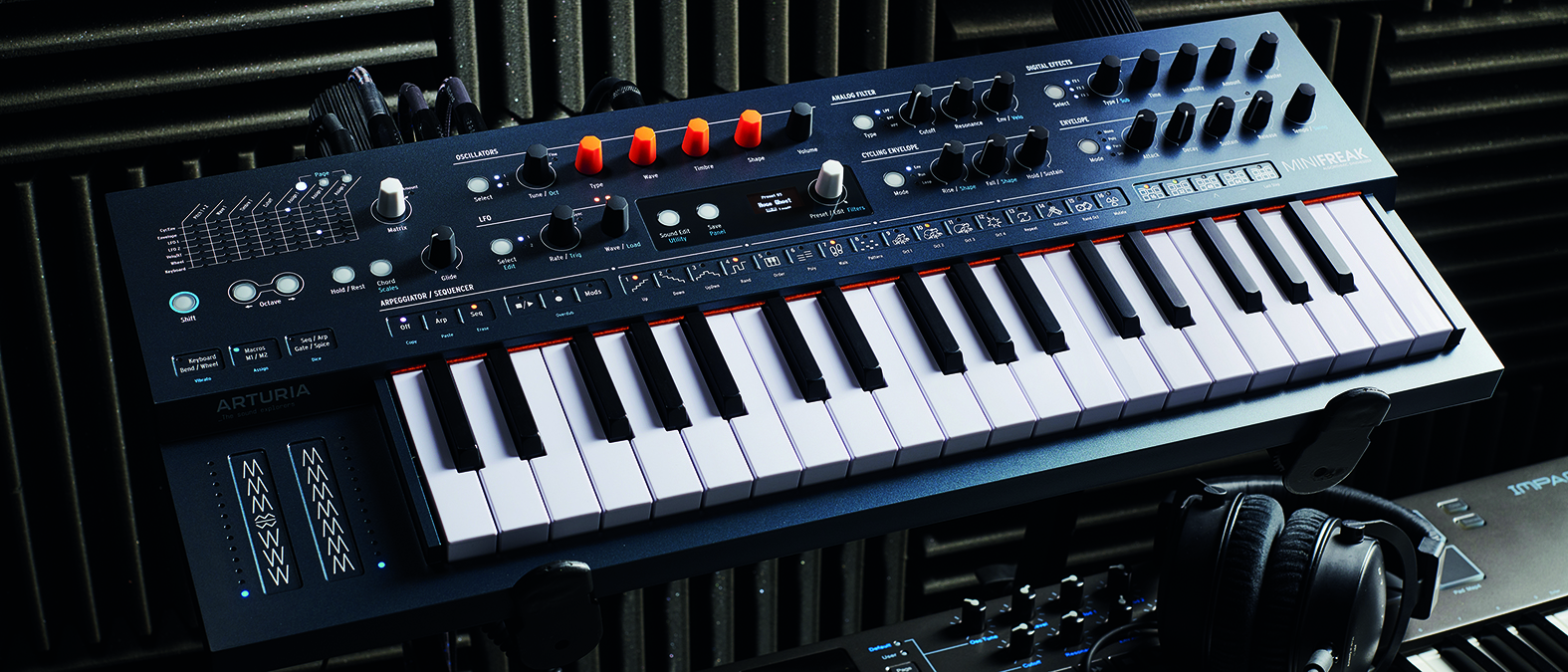MusicRadar Verdict
Although MiniFreak is less of a trailblazer than its little sibling, this is a versatile-sounding hybrid synth that’s a joy to get hands-on with.
Pros
- +
Multitude of excellent digital synthesis engines.
- +
Digital effects help bring sounds to life.
- +
Can be used as a processor for external audio (with some very fun results!).
Cons
- -
Lacks the depth of some rival digital synths, in places.
MusicRadar's got your back
Arturia MiniFreak: What is it?
Launched in 2019, Arturia’s MicroFreak was a bit of an outlier – a proudly digital instrument arriving at the end of a decade dominated by affordable analogue. The same can’t be said about the MiniFreak.
Between the likes of Korg’s Wavestate, Opsix and Modwave, Modal’s Cobalt and Argon synths, and Elektron’s Digitone, we’re arguably in the midst of a new golden age of digital hardware synths.
Whereas MicroFreak undercut much of the competition with its sub £300 price, the Mini’s price sees it going head-to-head with all the instruments mentioned above as well as the likes of ASM’s Hydrasynth Explorer.
Despite this increased competition though, Arturia’s latest Freak still feels like a unique entity. The marketing push for MicroFreak made a lot of its slightly oddball design and experimental nature, and much of that ethos is carried through.
On the whole, MiniFreak is effectively an expanded version of MicroFreak’s synth engine. As with that synth, the design here pairs multi-mode digital oscillators with an analogue filter section and VCA. Again, these elements come accompanied by ADSR and cycling envelope generators, LFOs, and a flexible mod matrix to route it all.
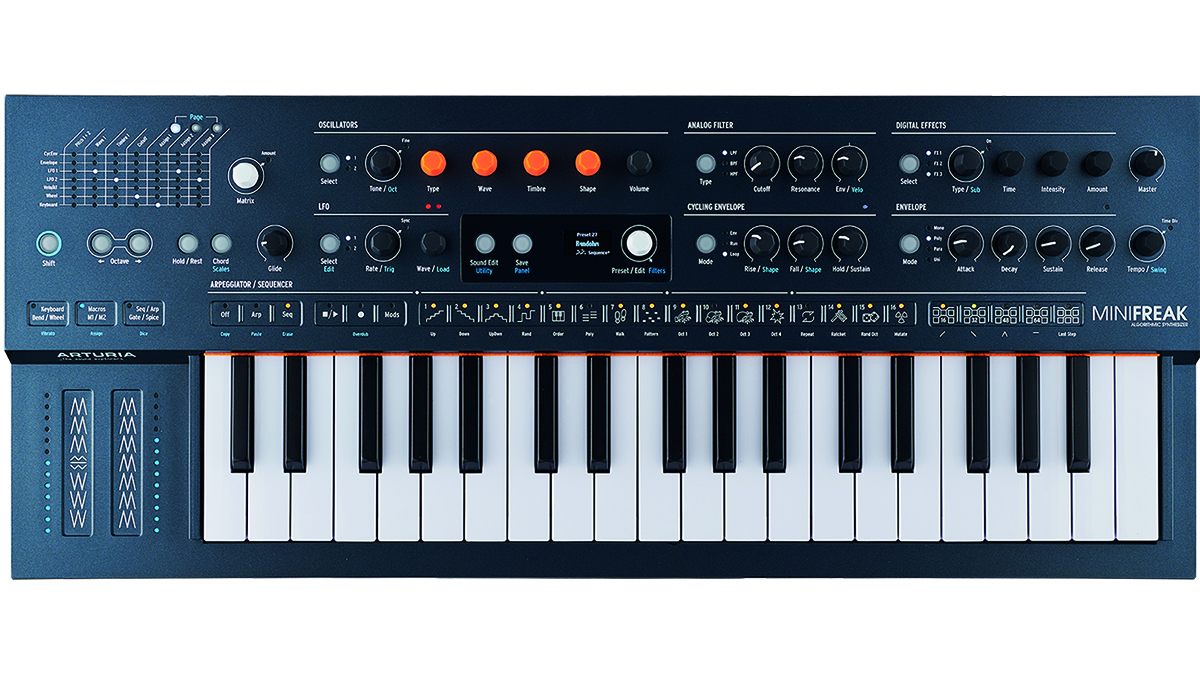
Almost every element has been scaled up for the MiniFreak though. This starts with the hardware itself, which is considerably larger than that of the MicroFreak, making this feel more like a fully-fledged instrument.
The extra size means space for a proper keyboard – as opposed to the Micro’s divisive capacity keys. The 37 keys here are still ‘slim’, similar in size to Arturia’s Keystep Pro, although they are equipped with velocity and aftertouch sensitivity, with a decent synth-action feel.
Want all the hottest music and gear news, reviews, deals, features and more, direct to your inbox? Sign up here.
The keyboard is joined by a pair of touchstrips placed to the left at a slightly lower level than the keyboard itself. These can act as a stand-in for traditional pitch and mod wheels, control a pair of assignable macros or increase the ‘Spice’ and ‘Dice’ parameters for the sequencer.

Arp and Seq
Like most of MiniFreak’s features, the sequencer and arp workflow is effectively an expanded version of MicroFreak’s offering. That means that fun features such as the ‘Spice’ and ‘Dice’ parameters are carried over, which let users perform variations to the sequencer gate length, velocity, decay and introduce elements of randomisation.
The major upgrade here is a row of 16 buttons allowing users to easily program and engage/disengage individual steps (up to a total of 64). MiniFreak also offers chord and scale modes, simplifying pattern creation.
The arp’s capabilities are expanded too, with features including new playback modes, ratchets and octave randomisation. As with the Micro, the sequencer also offers four channels of automation recording, along with rear panel CV/gate outputs allowing for control of analogue hardware.

MiniFreak V
In a rather unusual move, Arturia are offering MiniFreak alongside an official plugin version, which comes free with the hardware synth. MiniFreak V is essentially a straight port of the digital synth engine, albeit with emulated analogue elements.
Unsurprisingly the plugin version sounds remarkably similar. Some patches can be shared back and forth between the two, and the hardware can be used as a controller. Interestingly, some virtual features of the UI, such as oscilloscopes for the synth engines and animated visual representations of the envelopes, make the plugin version a better environment for sound design. It’s nice to have both!
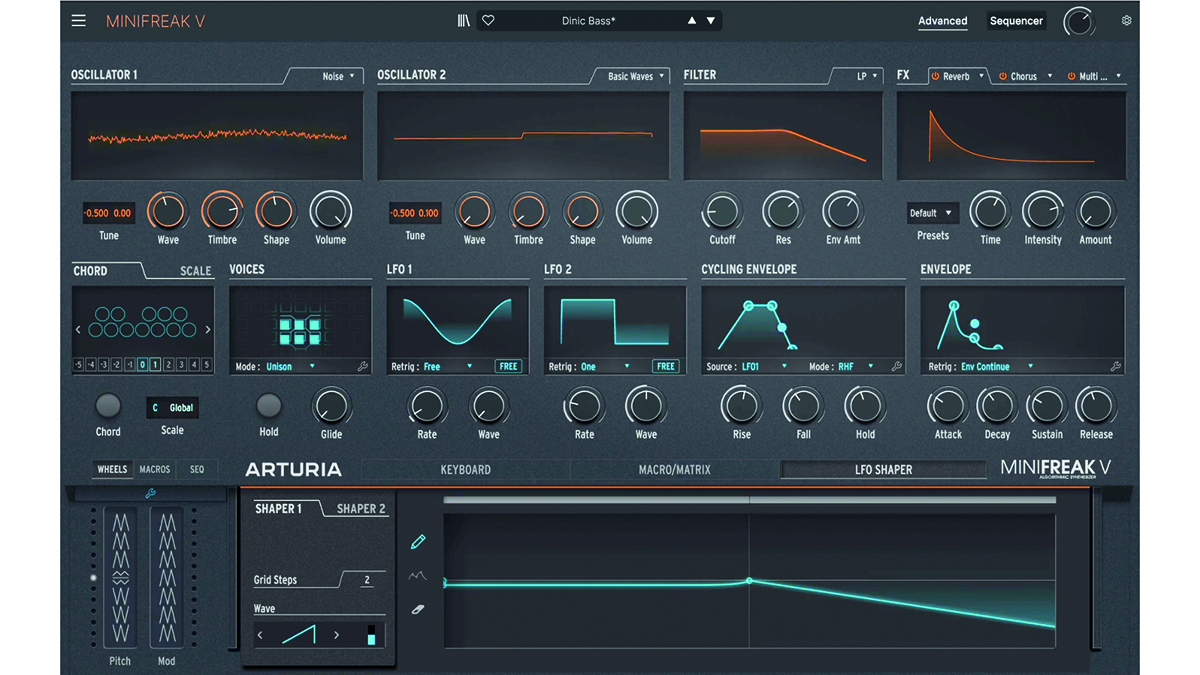
Arturia MiniFreak: Performance and verdict
In terms of capabilities, the main upgrade from the MicroFreak is an increased voice count. Whereas the Micro could operate in paraphonic mode, the MiniFreak is capable of full six-voice polyphony with filters and modulators for each voice.
There are a total of four voice modes available here: mono, poly, unison and paraphonic – where each voice’s two sound engines can be used individually to play up to 12 notes.
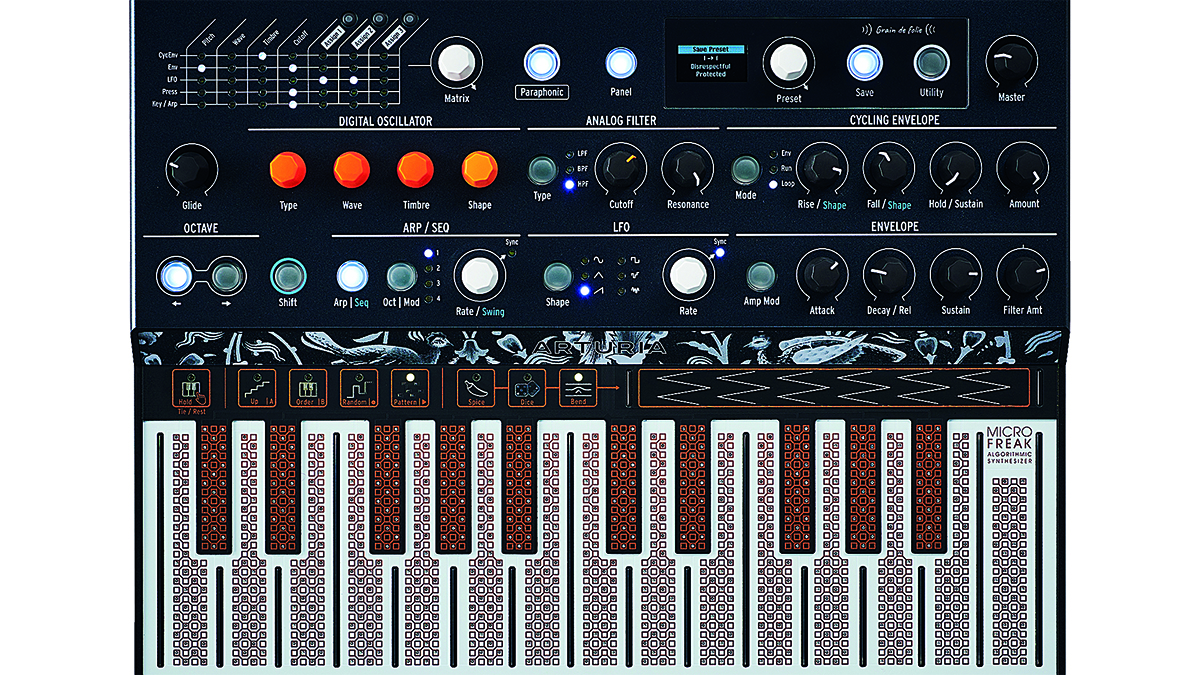
• Arturia MicroFreak
If you can live without the polyphony, effects and proper keyboard, the MicroFreak offers the same basic sounds – and at half the price.
• Korg Opsix
Korg’s modern take on an FM synth also uses a multitude of digital sound approaches. Its price has come down recently too, making it something of a steal overall.
• ASM Hydrasynth Explorer
The Hydrasynth is one of the best digital synths in recent years, and this smaller sibling brings its basic workflow into a more affordable instrument.
Having dual voice engines is another major upgrade from the MicroFreak. Each is an individual digital oscillator with a total of 22 modes available. These include straightforward synthesis approaches such as basic waveshapes and virtual analogue modes, plus a variety of classic digital approaches such as two-oscillator FM, waveshaping and stacked super waves. There’s also an abundance of more esoteric approaches to sound generation, such as noise, speech, formant and Karplus–strong synthesis modes.
As with the MicroFreak, there’s a healthy dose of influence from the modular realm here too, including several oscillator modes developed in conjunction with US brand Noise Engineering, as well as some that make use of Mutable Instruments’ open-source code.
The quirk of cramming such a variety of approaches into a single synth is that these often disparate methods of sound creation are required to share a unified set of controls.
The most fundamental of these are simple enough – Type controls the oscillator mode itself, while Tuning and Volume are self-explanatory and act the same for all oscillator types. Sound shaping is handled by the more vaguely-titled Wave, Timbre and Shape controls, the exact functions of which change depending on the current oscillator type being employed.
Users can play with complex synthesis concepts, via an easy-to-use interface
This restriction to using three catch-all controls for every synthesis type can occasionally make it feel like MiniFreak is only offering a simplified version of each concept. In FM mode, for example, it allows users to set the relative ratios of the two operators but not really get under the hood and adjust the amplitude envelopes of either.
On the whole, though, it’s a smart, flexible approach that lets users quickly explore different sound palettes. Key to the MiniFreak’s appeal is that users can experiment with these often fairly complex synthesis concepts, via an easy-to-use interface, for low-risk blind tweaking.
Sound design-wise, there are several advantages to having these two engines. Firstly, unlike on the MicroFreak, users can blend different synthesis approaches in a single patch. This works wonders for, say, creating rich, textured pads where a complex, modulated digital sound is underpinned by a more straightforward virtual analogue one.
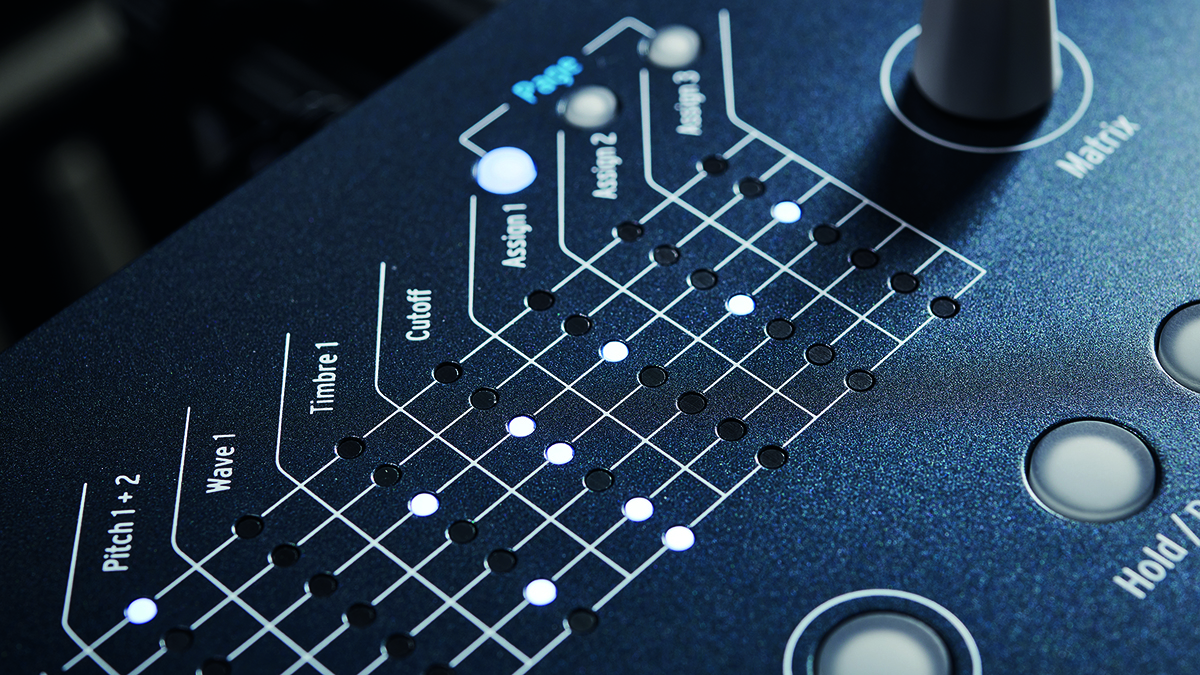
MiniFreak can also use the second sound engine to process the output of the first. This makes use of a variety of effect-like algorithms offering approaches such as comb filtering, surgical EQ, virtual analogue filters, ring modulation and distortion. The synth can also process sounds via its rear-panel audio input, effectively turning the whole instrument into one big filter and effects module.
On that subject, MiniFreak’s other significant addition is that of a three-auxiliary, digital effect engine. There are 10 effect modules to choose from, comprising the usual suspects – a delay, reverb, distortion, EQs, compression, phaser, flanger, and chorus – although most offer multiple varieties of each processor type.
As with the oscillators, these use shared controls to keep editing simple. A key characteristic of these effects, however, is the fact that they all operate in stereo – taking advantage of the synth’s rear panel stereo output – meaning they can add width and an extra dimension of movement.
Modulation is provided by two envelope generators and two LFOs. Envelope 1 is a straightforward ADSR design, while the second is a cycling envelope that can function either as a secondary rise/fall envelope or be looped for LFO-like functionality that can be pushed into the audible range.
The LFOs offer generous flexibility too, offering synced or freerunning operation, plus a variety of waveshapes and directions. There’s also a custom LFO designer mode that lets users chain basic shapes to build complex modulation patterns.

Key to MiniFreak’s modulation capabilities is its front panel mod matrix. This makes it simple to dial in and keep track of routings between a range of seven modulation sources and seven destinations.
Of those destinations, three are user assignable, which can be set up to modulate almost any parameter controlled by a front panel rotary (the only exceptions being effect type, master volume and tempo).
Similar in operation are the two macros, which can each be assigned up to four destinations that can be controlled in positive or negative directions by sweeping along the touchstrip.
There’s a lot of flexibility in this setup, although the one disappointment is that there’s no way to apply modulation or macro control to the depth of another modulation routing. This means there’s no easy way to, for example, set up the mod strip to increase the level of pitch modulation from an LFO to create a tremolo effect for performances.
This is one of several areas where the MiniFreak feels, at times, a touch shallower than some rivals. The modulation, while flexible, is nowhere near as deep as the complex operator-equipped setups of Korg’s Wavestate, et al. When it comes down to counting voices and oscillators, MiniFreak is towards the bottom of the pack at its price point too.
That said, the joy of working with MiniFreak is that it keeps its most exciting features up front, meaning it’s incredibly easy to experiment with oscillator combinations, modulation routings and effects without getting lost in sub-menus.
For all of its versatility too, Arturia has done an excellent job of creating a UI that feels like it has no wrong answers; even if you’re not interested in exploring the nuances of oscillator types, getting stuck in tends to consistently create winning results.
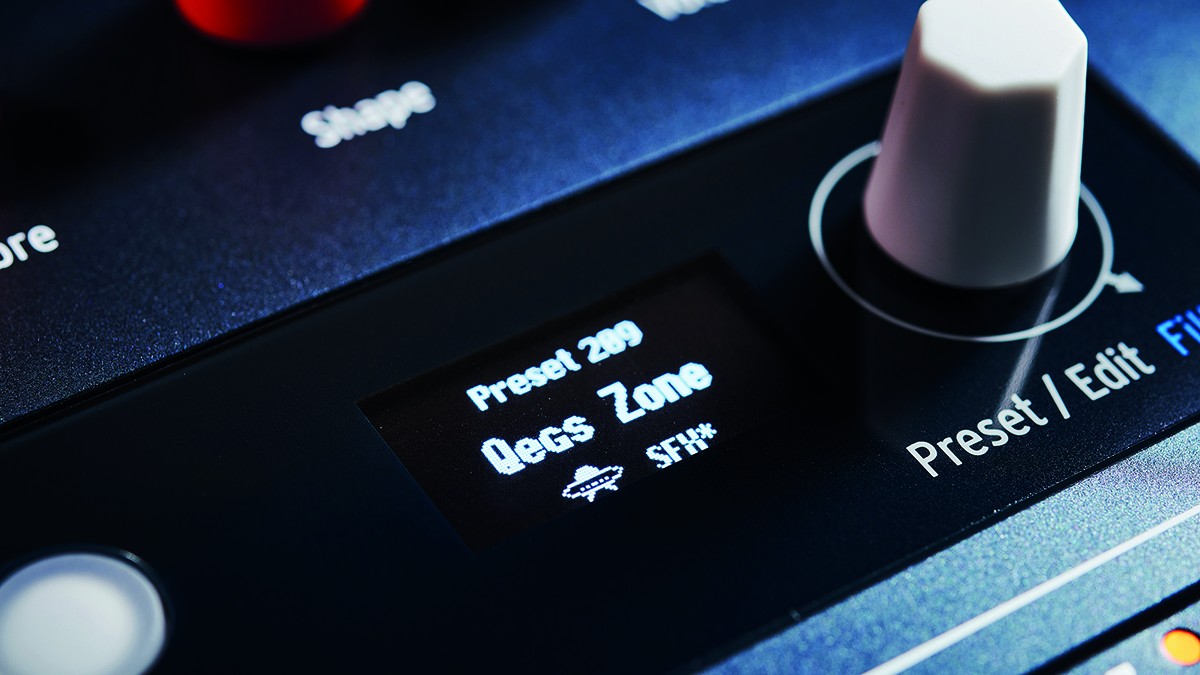
We loved the MicroFreak when it arrived, concluding that the “multiple oscillator modes cover a near-endless range of timbres; the filter is smooth and versatile; the Matrix invites exploratory modulation; and the performance and sequencing tools are the icing on the cake.” All of this remains true of the MiniFreak, but the various areas of expansion make it more of a capable studio workhorse.
Is that extra power worth the doubled price? Yes, the polyphony and effects vastly add to the usability. Conversely, however, the price point also means that it faces stiff competition from some truly excellent digital synths. But thanks to its impressive sonic breadth, powerful sequencer and an interface that’s a joy to get lost in, MiniFreak is very much a contender.
MusicRadar verdict: Although MiniFreak is less of a trailblazer than its little sibling, this is a versatile-sounding hybrid synth that’s a joy to get hands-on with.
Arturia MiniFreak: The web says
"Much more than just a bigger MicroFreak, Arturia’s MiniFreak is a six‑voice polysynth with a character like nothing else."
Sound On Sound
Arturia MiniFreak: Hands-on demos
Arturia
sonicstate
BoBeats
Andertons Synths, Keys and Tech
Arturia MiniFreak: Specifications
- KEY FEATURES: 6-voice hybrid polysynth (12-voices in paraphonic mode). 22 digital synthesis and processing engines. Analogue filters and VCAs for each voice. 3-slot effects engine. Sequencer and arpeggiator. 37-note ‘slim’ keyboard with velocity and aftertouch sensitivity.
- CONTACT: Arturia
I'm the Managing Editor of Music Technology at MusicRadar and former Editor-in-Chief of Future Music, Computer Music and Electronic Musician. I've been messing around with music tech in various forms for over two decades. I've also spent the last 10 years forgetting how to play guitar. Find me in the chillout room at raves complaining that it's past my bedtime.
